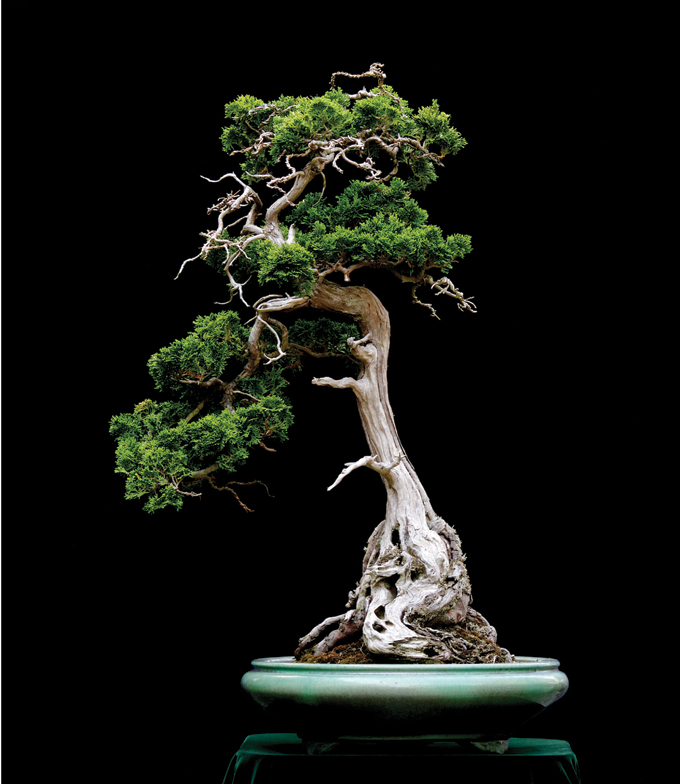 Picasso’s (aka Dan Robinson’s) now famous wild and wonderful Hinoki. It’s from Will Hiltz’ excellent book, Gnarly Branches, Ancient Trees, about Dan’s life and work. It’s no longer available through Stone Lantern, but I think they might still have some at Dan’s Elandan Gardens. Here’s the original Bark post.
Picasso’s (aka Dan Robinson’s) now famous wild and wonderful Hinoki. It’s from Will Hiltz’ excellent book, Gnarly Branches, Ancient Trees, about Dan’s life and work. It’s no longer available through Stone Lantern, but I think they might still have some at Dan’s Elandan Gardens. Here’s the original Bark post.
It’s Independence Day (here in the USA at least)! To help you celebrate, why not enjoy a sampling of home-grown (and a couple recent immigrant) bonsai from previous Bark posts?
But first, because many of our readers are not US Americans (and because some US Americans don’t know much about history anyway – not that any of you belong to that demographic) a quick lesson follows.
Two hundred and thirty seven years ago, a bunch of unruly (but very smart) male landowners (some even owned slaves) declared independence from their British overlords (who had among other things, outlawed bonsai), formed a rag-tag army and after much suffering on all sides, sent the Brits back to their often dreary (but wonderful) island. Now everyone has kissed and made up, slavery has ended (after even more suffering), women and people who don’t own land can vote too and some people even have bonsai collections (there might even be a handful of bonsai in England, where they are technically still illegal). That’s about it.
 Might as well feature another Hinoki while we’re at it, though this one is certainly a contrast in types with the one above. World-class Hinoki aren’t very common, but this muscle-bound powerhouse by Suthin Sukosolvisit certainly rates. If you know Suthin, you know that he is famous for his Shohin bonsai, but judging by this tree and many others, he should be famous for bonsai, period. Here’s the original Bark post.
Might as well feature another Hinoki while we’re at it, though this one is certainly a contrast in types with the one above. World-class Hinoki aren’t very common, but this muscle-bound powerhouse by Suthin Sukosolvisit certainly rates. If you know Suthin, you know that he is famous for his Shohin bonsai, but judging by this tree and many others, he should be famous for bonsai, period. Here’s the original Bark post.
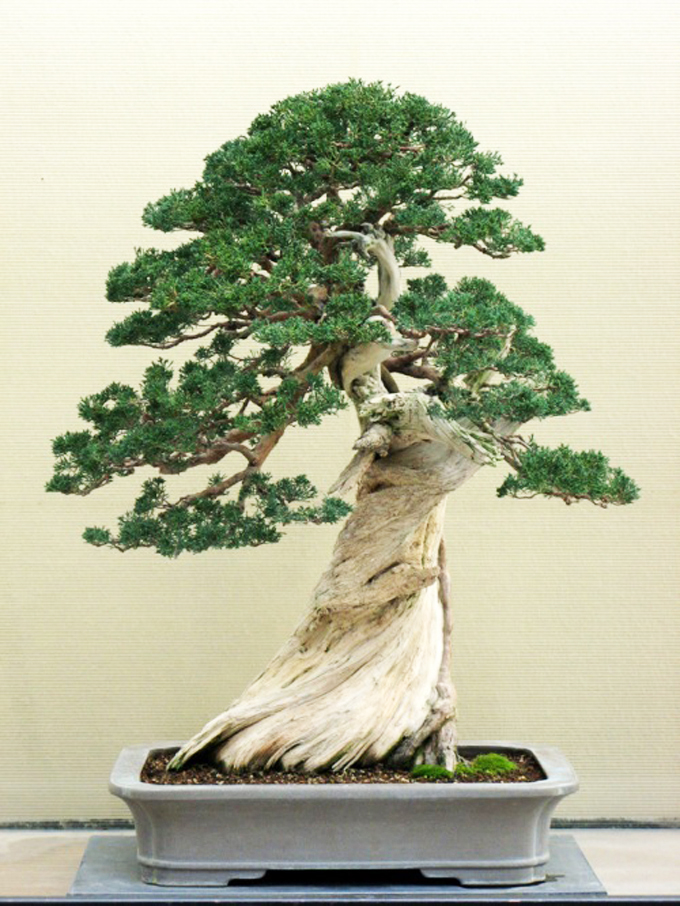 Michael Hagedorn reworked this magnificent collected Sierra juniper (grafted with Shimpaku) in a half-day refinement session at the Pacific Rim collection, way back in 2009. BTW: Michael’s Crataegus Bonsai blog is one of our all-time favorites (for his knowledge, his bonsai, and his writing). Here’s the original Bark post (including the before photo).
Michael Hagedorn reworked this magnificent collected Sierra juniper (grafted with Shimpaku) in a half-day refinement session at the Pacific Rim collection, way back in 2009. BTW: Michael’s Crataegus Bonsai blog is one of our all-time favorites (for his knowledge, his bonsai, and his writing). Here’s the original Bark post (including the before photo).
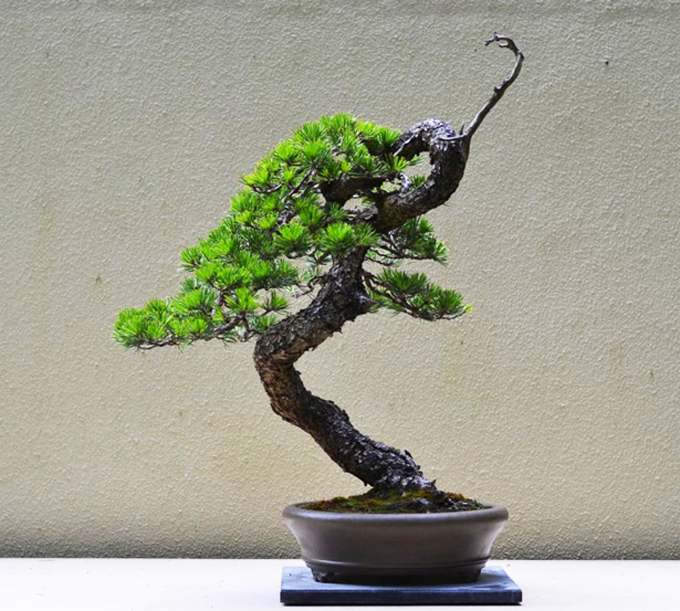 While we’re in the Northwest, we might as well stay there long enough to feature a Ryan Neil bonsai. In this case, the photo is not so great, but the tree is. It’s a collected Lodgepole pine. Here’s the original Bark post.
While we’re in the Northwest, we might as well stay there long enough to feature a Ryan Neil bonsai. In this case, the photo is not so great, but the tree is. It’s a collected Lodgepole pine. Here’s the original Bark post.
 This wildly expressive Wisteria is from Bill Valavanis‘ great new book Classical Bonsai Art. It belongs to Robert Blankfield, who originally styled it at a workshop with Bill. Here’s the original Bark post.
This wildly expressive Wisteria is from Bill Valavanis‘ great new book Classical Bonsai Art. It belongs to Robert Blankfield, who originally styled it at a workshop with Bill. Here’s the original Bark post.
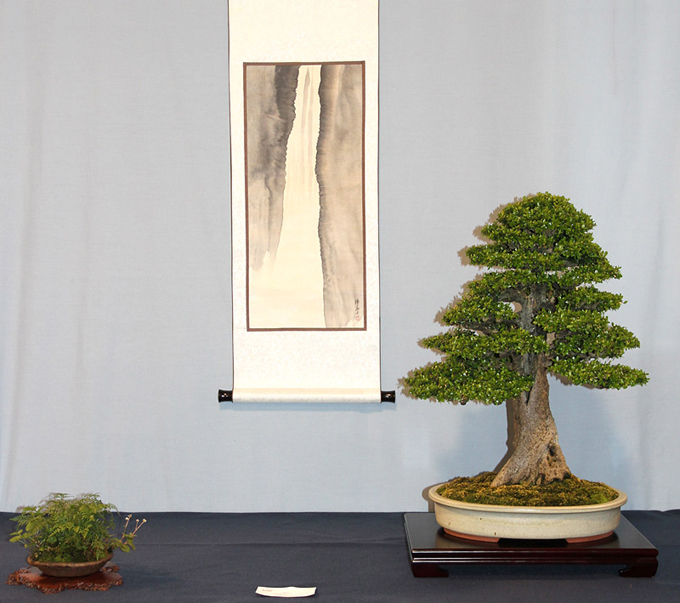 Let’s stick with Bill for a minute (the tree is not his, but the exhibition and the book are his doing). This one’s a Nia buxifolia that belongs to Michael Sullivan of Florida. It won the Finest Tropical Bonsai at the 2012 U.S. National Bonsai Exhibition. Here’s the original Bark post.
Let’s stick with Bill for a minute (the tree is not his, but the exhibition and the book are his doing). This one’s a Nia buxifolia that belongs to Michael Sullivan of Florida. It won the Finest Tropical Bonsai at the 2012 U.S. National Bonsai Exhibition. Here’s the original Bark post.
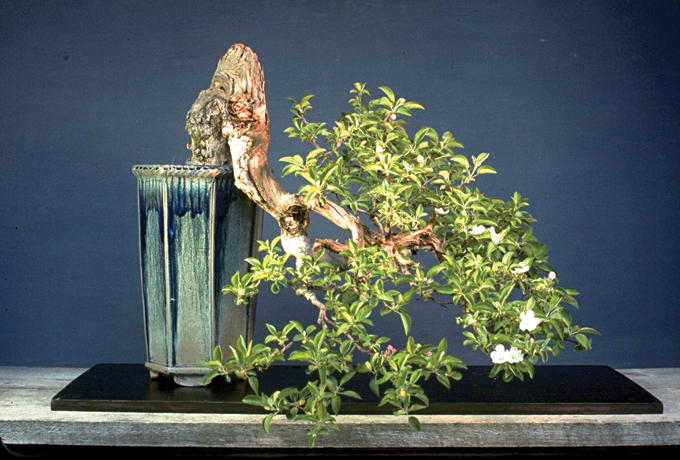 Nick (Larch Master) Lenz has collected and styled so many great Larches that it’s easy to overlook the fact that he also has collected and styled so many great trees that aren’t larches. This distinctive humpbacked apple is a pretty good example of one of those other trees. It’s from his Bonsai from the Wild, the ultimate book on collecting, especially collecting here in the U.S. Here’s the original Bark post.
Nick (Larch Master) Lenz has collected and styled so many great Larches that it’s easy to overlook the fact that he also has collected and styled so many great trees that aren’t larches. This distinctive humpbacked apple is a pretty good example of one of those other trees. It’s from his Bonsai from the Wild, the ultimate book on collecting, especially collecting here in the U.S. Here’s the original Bark post.
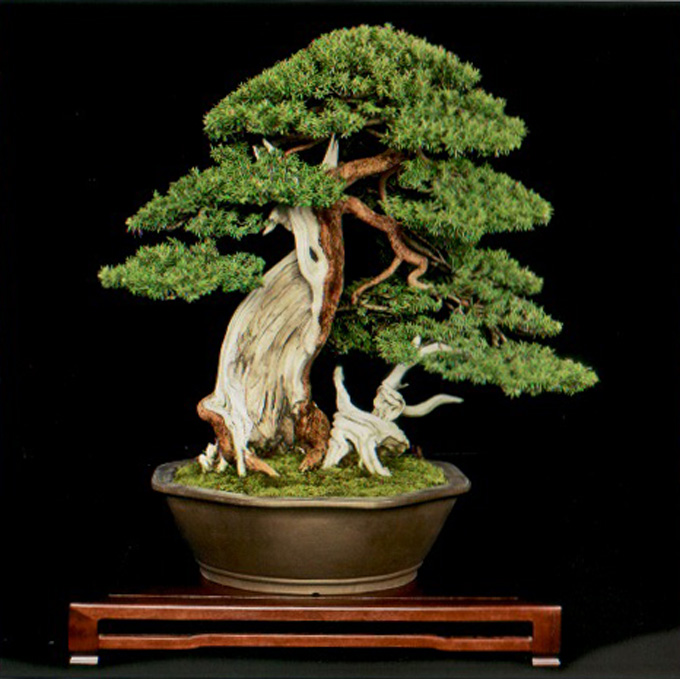 Time for an immigrant. This worthy old Korean yew (Taxus cuspidata, usually called Japanese yew) was donated to the Pacific Rim Bonsai Collection by Mr. Su Hyung Yoo of Korea. It’s one of 248 fine bonsai that are featured in the 3rd U.S. National Bonsai Exhibition Album and in my opinion, one of the best. Here’s the original Bark post.
Time for an immigrant. This worthy old Korean yew (Taxus cuspidata, usually called Japanese yew) was donated to the Pacific Rim Bonsai Collection by Mr. Su Hyung Yoo of Korea. It’s one of 248 fine bonsai that are featured in the 3rd U.S. National Bonsai Exhibition Album and in my opinion, one of the best. Here’s the original Bark post.
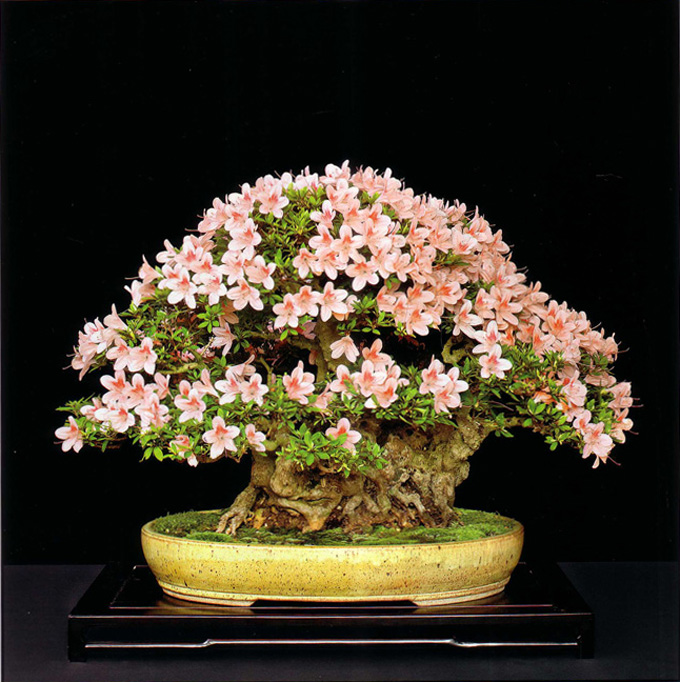 This rare beauty is the other immigrant. It’s a Nikko Satsuki Azalea that belongs to The Kennett Collection. It originally belonged to Kunio Kobayashi of Japan, one of the world’s most renowned bonsai artists. Like many of the other trees in this post, it’s featured in the 3rd U.S. National Bonsai Exhibition Album. Here’s the original Bark post.
This rare beauty is the other immigrant. It’s a Nikko Satsuki Azalea that belongs to The Kennett Collection. It originally belonged to Kunio Kobayashi of Japan, one of the world’s most renowned bonsai artists. Like many of the other trees in this post, it’s featured in the 3rd U.S. National Bonsai Exhibition Album. Here’s the original Bark post.
 This sweet California native is the tree that graced the cover of the very last issue of Bonsai Today (issue 108). It’s a Sierra juniper that belongs to Boon Manakitivipart one of North America’s most influential bonsai artists and teachers. Here’s the original Bark post.
This sweet California native is the tree that graced the cover of the very last issue of Bonsai Today (issue 108). It’s a Sierra juniper that belongs to Boon Manakitivipart one of North America’s most influential bonsai artists and teachers. Here’s the original Bark post.
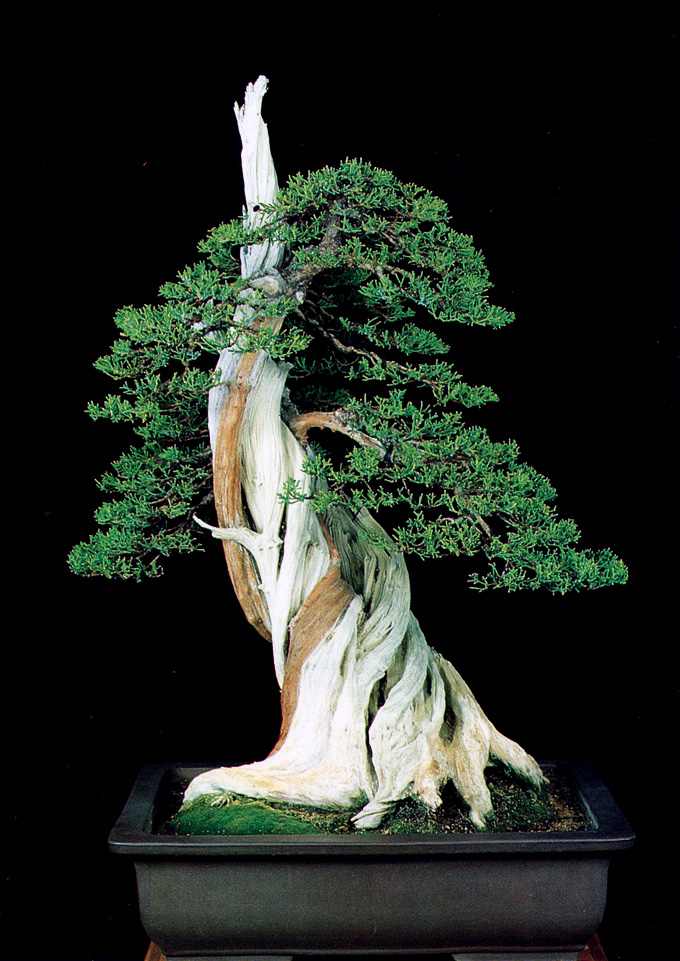 Sheer power displayed by another California native. This photo of a now famous California juniper (Juniperus californica) is originally from a chapter by Ernie Kuo in our Masters’ Series Juniper Bonsai book that’s titled ‘Two Studies.’ Here’s the original Bark post.
Sheer power displayed by another California native. This photo of a now famous California juniper (Juniperus californica) is originally from a chapter by Ernie Kuo in our Masters’ Series Juniper Bonsai book that’s titled ‘Two Studies.’ Here’s the original Bark post.
 We’ll leave you for now with this sumptuous Japanese maple that just happens to appear on the cover of Bill Valavanis’ great new book, Classical Bonsai Art. Here’s the original Bark post.
We’ll leave you for now with this sumptuous Japanese maple that just happens to appear on the cover of Bill Valavanis’ great new book, Classical Bonsai Art. Here’s the original Bark post.
I know there are hundreds of other great trees and dozens of other artists that could well represent American (in the U.S. sense of American) bonsai, but time and space are limitations. Don’t worry though, we’ll get to you soon enough (if we haven’t already).